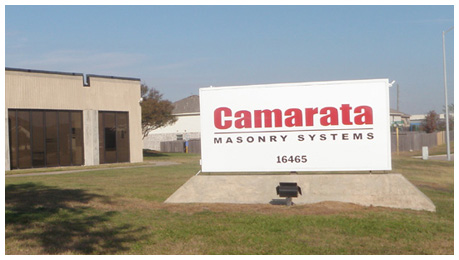The blue collar heroes we talk about all the time on Construction Citizen are constantly doing good works throughout the communities where they live. In fact, they do this work in an under-the-radar kind of way that causes them to seldom be thanked for it.I found a prime example of this in Northwest Harris County, where workers for several companies including Karsten Interiors, Excel Drywall, D.E. Harvey Builders, Marek Brothers Systems, and others were helping to renovate a boys’ home called The Good Shepherd Residential Treatment Center. (See below for a complete list of the companies involved.)Founded in 1999, the center is a 40-bed home for boys who have been removed from their families by Texas courts for a variety of reasons. It is a non-profit and is always in need of donations.Administrator and CEO of The Good Shepherd, Dr. J. Charles Hinds, told me some of the boys were simply neglected by their families and others were subjected to terrible abuse.
Reshaping the Construction Industry


Brasfield & Gorrie, one of the nation’s largest privately held construction firms, recently celebrated the topping out of the second phase of Project ONE, a $42.4 million, two-tower office building and retail space located in downtown Greenville, South Carolina. Greenville’s WYFF News 4 Team reported last year that the project is being called “ONE” to “signify its central place”, according to developer Bob Hughes of Hughes Development Corporation. The entire project, which is being built at the site of the former historic Woolworth building, is scheduled to be completed in June 2013.Phase II broke ground in June 2012 and includes the 11-story, 201,000 square foot South Office Tower, which has seven floors of meeting and training rooms as well as an auditorium space for CertusBank, an anchor tenant.
December 19, 2012


The skills gap we’ve covered extensively on Construction Citizen isn’t just a phenomenon in the United States. It’s also a problem in Europe and the Middle East, where The Economist reports that a quarter of 15- to 24-year-olds don’t have a job.In a piece called “The Great Mismatch”, The Economist Schumpeter Blog says:“Altogether 75 million of the world’s young people are unemployed and twice that number are underemployed. This not only represents a huge loss of productive capacity as people in the prime of life are turned into dependents. It is also a potential source of social disruption and a daily source of individual angst.
December 17, 2012


OSHA’S Type and Capacity RequirementThis article originally appeared in Crane & Rigging Hot Line, and is reprinted here with permission by the author.Lately there’s been a lot of chatter in the industry about OSHA requiring operators to be certified by type and capacity. This particular requirement was included in the new Cranes and Derricks in Construction rule when it was issued in 2010. It shouldn’t be a surprise to those in the industry, so why all the fuss?In 2003, OSHA formed a committee to develop the new Cranes and Derricks standard which would replace CFR 1926.550. This standard surely needed an update because other than the addition of language related to hoisting personnel, which was added in the late 1980s, there hadn’t been any changes to the rule since its inception.OSHA 1926 Subpart CC, Final Rule was finally issued in August 2010, not only helping the industry to catch up to current industry standards, but going even further in some areas, such as its requirements for crane operator certification. Operators must be certified by November 10, 2014 through an accredited program and by type and capacity.
December 13, 2012


Real improvement requires actionable data. Measures are used to establish realistic goals and to track progress, and there are many examples in the construction industry. Safety improvement is based on measures of recordable and lost time accidents. Cost management uses budgets and spending reports. Quality improvement is based on regular reports on trends of defects to identify problem areas.To improve the construction skilled labor workforce, we need good, reliable data on the workforce size and the future needs. How many skilled workers do we already have? How many do we need now? What are the future needs for each craft? Which specific skills are critical for the types of projects expected in the next 5 years?
December 12, 2012


The shortage of construction workers we've been warning about on Construction Citizen is beginning to happen across the nation and the national media is starting to take notice.USA Today reports: “The crunch is affecting a handful of states, including Texas, Arizona, Iowa and Florida. But it's expected to worsen and spread across the USA over the next few years, building officials say. The shortages are already prompting builders to raid each other's job sites for workers.”The newspaper story says some are shocked by this, but regular readers of our blog won't be.Construction Citizen blogger Stan Marek recently asked the question “Where have all the young men gone?” and Greater Houston Builders Association CEO Toy Wood told me in an exclusive interview that home builders are being forced to delay some projects in and around the Houston area because of a lack of skilled workers.The USA Today story goes on to say:“Twenty-nine percent of home builders surveyed by the National Association of Home Builders in June reported some shortage of framing workers and 6% said there was a serious deficit – only slightly less than in 2006 at the height of the home construction frenzy.;
December 10, 2012


Last week I visited the offices of Camarata Masonry Systems, Ltd to interview their president, Kevin Camarata, about what the craft of masonry is all about. The following is a transcript from part of our conversation. -EMEM: How did you get into the masonry business?KC: It was by happenstance. In college I worked during summers in construction as a laborer for a general contracting firm because I could make more money doing that than anything else, then basically I just grew to love it. I was working for a general contractor after college when a friend of mine contacted me. He ran an engineering personnel placement service, and he thought that I would be a good fit for a relatively young stone contractor out of New Orleans. I interviewed and was hired.So your experience before going to work for the contractor in New Orleans was in all different kinds of construction?It was primarily general contracting and carpentry, specifically, for the general contractor.Did you have any training outside of the job?
December 06, 2012


In a move that a key lawmaker called “unprecedented” and “unmistakable,” The Texas Workforce Commission (TWC) has unanimously voted to press the legislature to crack down on employers who commit payroll fraud.The commission is asking the legislature to impose penalties on companies that intentionally misclassify their employees when they get government contracts.Misclassification of employees happens when a company pays a person as a contractor when that person actually, by law, should be paid as an hourly employee. This is done to avoid payroll taxes and significantly cut their costs. Federal law defines what kind of worker can be classified as an employee versus an independent contractor. Dozens of other states, Oklahoma is a particularly strong example, have passed laws to deal with this.For the past ten years, Workforce Commissioner Ronny Congleton has pushed for the commission to take a stance on misclassification, often called payroll fraud, but until now his proposals have never gotten any traction.
December 05, 2012


Crane Institute of America Certification (CIC) and MCM Events, a division of Maximum Capacity Media, have named Jesse Pettit the National Champion of the Crane Operator Rodeo competition held Oct. 27, 2013 in Davenport, Florida. Pettit, an operator for Maxim Crane in Phoenix, Arizona, first got his experience as a crane operator in the U.S. Army and has been operating cranes commercially for about 10 years. Pettit took home $1,000 cash and other prizes sponsored by Manitowoc Cranes.CIC was the Event Partner for the Crane Operator Rodeo, which included five Regional Qualifiers that culminated in the National Championship in October, where 10 finalists competed using a 66-ton LTR 1060 telescopic crawler crane
December 03, 2012


This article by Patricia Kilday Hart originally appeared in the Houston Chronicle on 11/30/2012. Reprinted with permission.“Independent contractor” has a nice ring to it. The title itself carries a certain cachet, as if the person claiming it is self-sufficient enough to shun ordinary employment, brave enough to go it alone. The self-employed, after all, have only one boss to please.But in reality, especially in the construction industry, the “independent contractor” label is a dodge. It’s how some employers get away with skirting laws requiring them to pay a minimum hourly wage, payroll taxes and provide workers’ compensation coverage. It’s how some businesses game the system to defeat competitors – and hose their employees in the process.Now, the practice has become so pervasive that some business leaders want the Legislature to ban the “misclassification” of employees in public contracts. Businesses that aren’t following employment laws shouldn’t get those lucrative government jobs, they reason.They want a level playing field. But it’s more than that. According to Stan Marek, CEO of Houston-based Marek Brothers Construction, the issue has long-term implications for the Texas economy.
December 02, 2012



.jpeg?itok=6uFZXEBH)





.jpeg?itok=4Vi_1nJG)











